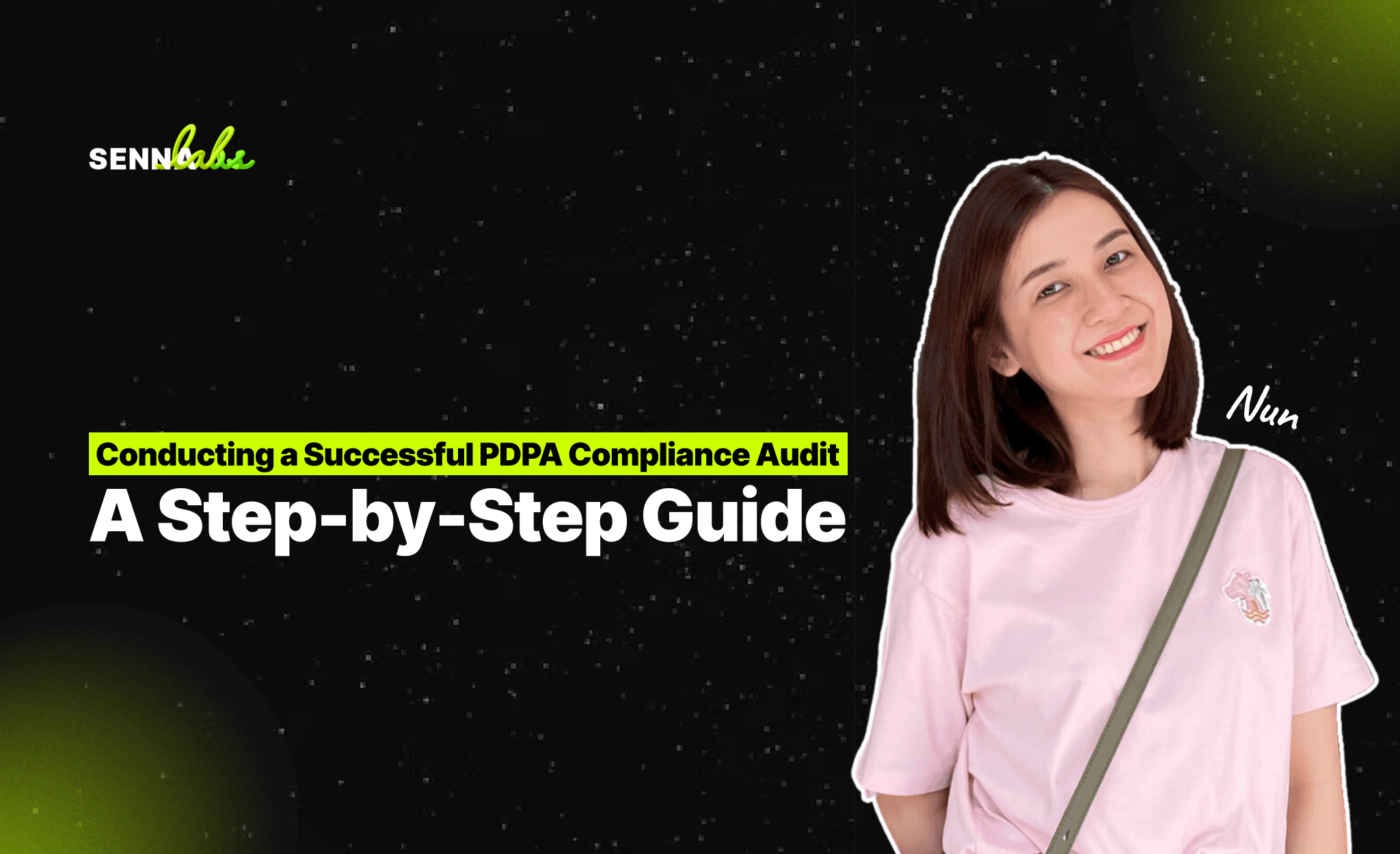Conducting a Successful PDPA Compliance Audit: A Step-by-Step Guide
Share

In an increasingly digital world, where personal data is constantly being collected, processed, and shared, the Personal Data Protection Act (PDPA) is essential for ensuring that businesses handle personal data responsibly. Adhering to PDPA regulations is not just about avoiding penalties—it’s about protecting customer trust, securing sensitive information, and preventing data breaches.
One of the most effective ways to ensure compliance with PDPA is by conducting a comprehensive internal audit. A PDPA compliance audit helps businesses identify gaps in their data protection practices, assess the level of compliance, and take corrective actions to mitigate risks. This article will provide a step-by-step guide on how to conduct a PDPA compliance audit and share a real-world use case of a healthcare provider that improved data security by 40% after completing their audit.

Why Conduct a PDPA Compliance Audit?
A PDPA compliance audit is a thorough review of how an organization collects, processes, stores, and secures personal data. It allows businesses to:
-
Identify gaps in current data handling practices.
-
Ensure that processes align with PDPA regulations.
-
Mitigate risks related to data breaches and non-compliance.
-
Improve data security and avoid penalties from regulatory bodies.
In addition to these practical benefits, conducting regular PDPA audits also strengthens customer trust by demonstrating a commitment to responsible data protection practices.
Key Elements of a PDPA Compliance Audit
Before diving into the audit process, it’s important to understand the key areas that should be covered in a PDPA audit. These include:
-
Data collection practices: Are personal data collected for specific and legitimate purposes?
-
Consent management: Are there clear consent mechanisms in place for data collection, processing, and sharing?
-
Data storage and security: Are there robust security measures in place to protect personal data from unauthorized access or breaches?
-
Data access and control: Do individuals have the right to access, correct, or delete their personal data? Is there a mechanism for responding to such requests?
-
Third-party vendor management: How is personal data shared with external vendors or partners? Are these third parties compliant with PDPA?
-
Data retention policies: Are there guidelines for retaining and securely disposing of personal data?
Step-by-Step Guide to Conducting a PDPA Compliance Audit
Step 1: Assemble an Audit Team
The first step in conducting a successful PDPA compliance audit is to assemble a dedicated audit team. This team should consist of individuals who have a clear understanding of the company’s data handling processes, IT infrastructure, and legal responsibilities under PDPA. Depending on the size of the organization, this team may include representatives from IT, legal, compliance, and management.
Step 2: Review Current Data Handling Practices
Once the audit team is in place, the next step is to review the organization’s current data handling practices. This includes mapping out how personal data is collected, processed, stored, and shared across the business. Key questions to ask include:
-
What types of personal data are being collected?
-
How is consent obtained for data collection and processing?
-
Where and how is personal data stored (e.g., cloud storage, on-premise servers)?
-
Who has access to personal data, and how is access controlled?
-
How is personal data shared with external vendors, partners, or third parties?
This step should involve reviewing all data collection points, such as websites, mobile apps, customer forms, and employee records.
Step 3: Evaluate Consent Mechanisms
One of the key requirements of PDPA is obtaining explicit consent from individuals before collecting or processing their personal data. During the audit, assess the effectiveness of your consent mechanisms by considering the following:
-
Are consent forms easy to understand and transparent about how data will be used?
-
Do individuals have the ability to withdraw consent at any time?
-
Is consent obtained separately for different data processing activities (e.g., marketing, data sharing)?
If consent mechanisms are unclear or inadequate, the audit team should flag this as an area for improvement.
Step 4: Assess Data Security Measures
Data security is a critical component of PDPA compliance. The audit should include a thorough assessment of the company’s data security protocols to ensure that personal data is adequately protected against breaches, unauthorized access, and misuse. Key considerations include:
-
Are there encryption measures in place for sensitive personal data?
-
How is access to personal data controlled (e.g., password protection, multi-factor authentication)?
-
Are there firewalls and intrusion detection systems in place to prevent cyberattacks?
-
Is personal data regularly backed up, and are those backups stored securely?
A lack of robust security measures can lead to significant risks, including data breaches and non-compliance with PDPA.
Step 5: Review Data Access and Correction Protocols
Under PDPA, individuals have the right to access their personal data, correct inaccuracies, and request the deletion of their data. During the audit, ensure that the company has clear protocols in place for handling such requests. This includes:
-
Providing individuals with an easy way to access their personal data.
-
Responding to access requests in a timely manner.
-
Allowing individuals to correct or update their data if necessary.
If there are any gaps in the process for managing data access requests, the audit should highlight these issues and recommend improvements.
Step 6: Examine Third-Party Vendor Compliance
Many organizations share personal data with third-party vendors, such as cloud storage providers or marketing agencies. However, under PDPA, businesses are responsible for ensuring that their vendors are also compliant with data protection regulations. During the audit, review all vendor agreements and assess whether third parties are following PDPA-compliant practices. This includes:
-
Ensuring that data sharing agreements are in place.
-
Reviewing vendor security measures to ensure that personal data is protected.
-
Monitoring how third-party vendors use and store personal data.
If any third-party vendors are found to be non-compliant, the audit team should recommend corrective actions, such as updating contracts or terminating the relationship.
Step 7: Analyze Data Retention and Disposal Practices
PDPA requires that personal data should not be kept longer than necessary for the intended purposes. As part of the audit, assess the company’s data retention policies and ensure that personal data is securely disposed of when it is no longer needed. Key questions include:
-
Are there guidelines for how long personal data is retained?
-
Is personal data securely deleted or anonymized when no longer required?
-
Are backups of personal data regularly reviewed and deleted when necessary?
Failing to properly manage data retention can expose the organization to unnecessary risks, including data breaches and legal penalties.
Step 8: Document Findings and Recommend Improvements
Once the audit is complete, the audit team should document their findings and provide a detailed report to management. This report should outline areas where the company is compliant, as well as any gaps or risks that need to be addressed. The audit team should also provide specific recommendations for improving data handling practices, securing personal data, and ensuring ongoing compliance with PDPA.
Use Case: Healthcare Provider’s PDPA Audit Success
To illustrate the real-world impact of a PDPA audit, let’s look at a use case involving a healthcare provider.
The Challenge:
A healthcare provider was handling sensitive patient information and realized that its data protection practices were not aligned with PDPA requirements. This posed a significant risk, as any data breach could lead to legal penalties and a loss of patient trust.
The Solution:
The healthcare provider conducted a comprehensive PDPA compliance audit. During the audit, the team discovered several non-compliance risks, including inadequate encryption measures, unclear consent forms, and improper data access controls. The audit also revealed that personal data was being retained for longer than necessary, increasing the risk of a breach.
The Results:
After resolving these issues, the healthcare provider significantly improved its data security practices. They implemented encryption for sensitive data, updated consent forms to ensure transparency, and enhanced access controls to limit who could view personal data. As a result, the organization reduced the risk of data breaches by 40% and improved its overall compliance with PDPA.
Conclusion
Conducting a PDPA compliance audit is an essential step for businesses to ensure that they are handling personal data responsibly and legally. By following the step-by-step guide outlined in this article, businesses can identify potential risks, address gaps in their data protection practices, and safeguard their customers’ personal information.
A successful PDPA audit not only reduces the risk of data breaches and legal penalties but also helps build trust with customers by demonstrating a commitment to data privacy and security.

Share
